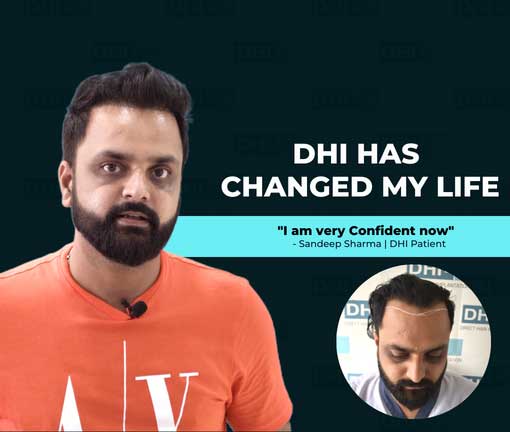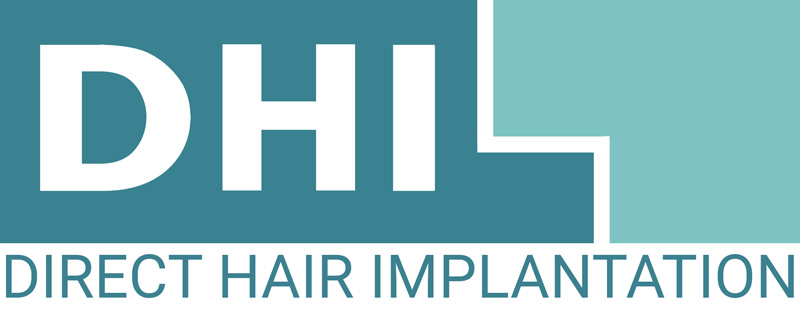Hair Transplants and the Role of Platelet-Rich Plasma (PRP Treatment)

Are you looking for the best way to restore hair and boost growth after a hair transplant? Hair transplants have become one of the most effective solutions for hair loss, and when combined with Platelet-Rich Plasma (PRP) therapy, the results can be even more remarkable. This guide will cover how PRP works, its benefits, and how it complements hair transplant procedures for optimal results. Let’s dive into everything you need to know about hair transplants and the role of PRP therapy.
What is a Hair Transplant?
A hair transplant is a medical procedure designed to move hair follicles from a healthy area (often the back of the scalp) to a bald or thinning area. With the most advanced and modern techniques like DHITM Direct hair implantation, hair transplants provide natural-looking and long-lasting results with maximum density in two options: shaven or unshaven scalp.
Why Are Hair Transplants So Popular?
Hair transplants offer a permanent solution to hair loss. Unlike other treatments, they don’t just slow down hair loss; they restore hair by transplanting new, healthy follicles directly onto the scalp. People choose hair transplants because they achieve natural results, and once the new hair grows, it remains just like the rest of your hair.
Understanding Platelet-Rich Plasma (PRP) Therapy for Hair Restoration
What is PRP Therapy?
Platelet-rich plasma (PRP) treatment or therapy is a cutting-edge procedure that uses a patient’s own blood to stimulate natural hair growth. But how does it work? In PRP therapy, a small amount of blood is drawn, and the plasma is separated in a centrifuge to concentrate the platelets. These platelets are rich in growth factors, encouraging hair growth and strengthening existing follicles when injected into the scalp.
Benefits of PRP Therapy for Hair Growth
Why is PRP therapy effective for hair growth? Here are some key benefits:
- Stimulates Follicle Health: PRP injections improve the health of hair follicles, making them more robust.
- Promotes Healing and Repair: PRP reduces inflammation, enhancing scalp health and allowing hair follicles to function better.
- Boosts Natural Hair Growth: The growth factors in PRP encourage inactive follicles to enter the growth phase, helping new hair grow faster.
PRP Therapy in Medical Aesthetics
Did you know that PRP therapy isn’t only for hair? It’s also used in skin rejuvenation, wound healing, and joint therapy. This versatility adds credibility to its use in hair restoration, showing that PRP has widespread medical benefits beyond hair.
How PRP Enhances Hair Transplant Success
Preparing the Scalp with PRP
How does PRP prepare the scalp for a hair transplant? Before a hair transplant, PRP can be injected into the scalp to create an optimal environment. The growth factors help improve the scalp’s health, making it easier for transplanted follicles to “take root” and thrive.
Promoting Graft Survival and Growth Post-Transplant
Why is PRP important after a transplant? After a transplant, the scalp undergoes a recovery phase. PRP accelerates healing and helps newly transplanted hair follicles survive and grow. This speeds up recovery and increases the chances of thicker, healthier hair.
Reducing Recovery Time and Scarring
Does PRP help reduce scarring? Yes. PRP is known for its healing properties, which can minimize scarring, especially in FUT transplants. Additionally, it reduces the risk of infection, leading to a smoother recovery and fewer complications.
The PRP Hair Restoration Process: What to Expect
Step-by-Step Guide to PRP Therapy for Hair
Wondering what PRP therapy involves? Here’s a step-by-step breakdown of the PRP process:
- Initial Consultation: The first step is a thorough consultation, where your doctor examines your scalp and assesses your suitability for PRP.
- Blood Extraction and PRP Preparation: A small amount of blood is drawn from your arm, and the plasma is separated using a centrifuge to concentrate the platelets.
- Scalp Injection: The PRP is carefully injected into thinning or transplanting areas on the scalp to stimulate growth.
- Post-Procedure Care: Patients may experience mild discomfort, but this usually subsides within a few days.
How PRP Complements Hair Transplant Sessions
Can PRP be combined with hair transplant sessions? Absolutely. Many patients choose to integrate PRP sessions into their hair transplant process. PRP can be administered during or after the transplant to improve results and encourage new growth. Regular PRP sessions, scheduled over several months, support new hair.
Who is an Ideal Candidate for PRP with Hair Transplant?
Who benefits the most from combining PRP with a hair transplant procedure? Patients in the early stages of hair loss or those who want faster recovery can experience significant advantages. Here’s a closer look:
- Early-Stage Hair Loss: PRP works well for those with thinning hair rather than complete baldness.
- Faster Recovery: PRP can speed healing, making it ideal for patients who want to return to daily activities quickly.
- Active Follicles: PRP is most effective when hair follicles are still active but weakened.
Who Might Not Benefit from PRP Therapy?
Is PRP suitable for everyone? PRP may be less effective for advanced hair loss cases where follicles are no longer active. Patients with severe health conditions or scalp infections should consult a specialist before considering PRP therapy.
What Results Can You Expect from Hair Transplant and PRP Combined?
Expected Timeline for Results
How soon will you see the results? Hair restoration with PRP and transplants doesn’t happen overnight. Here’s a general timeline for what to expect:
- First 1-3 Months: The transplanted hair may fall out initially; this is normal as new hair growth begins.
- Months 4-6: Early signs of growth appear, and hair starts to thicken.
- 6 Months and Beyond Significant improvement becomes noticeable, with full results visible in about 12-18 months.
Typical Outcome and Success Rate
How effective is PRP with a hair transplant? When used together, PRP and hair transplants have a high success rate, with many patients experiencing improved hair density and faster recovery times. The combination can make hair thicker and healthier.
Factors Influencing Results
What factors impact PRP and transplant results? Several factors can affect the outcome, including:
- Patient’s Age: Younger patients often see better results due to healthier follicles.
- Severity of Hair Loss: Those in the early stages benefit more than those with advanced baldness.
- Lifestyle and Health: Good overall health and a balanced lifestyle can support better results.
FAQs about Hair Transplants and PRP Therapy
Is PRP Painful?
The PRP process involves needles, but it’s generally well-tolerated. Some patients experience mild discomfort, which quickly subsides.
How Many PRP Sessions Are Needed?
A typical treatment plan includes 3-4 PRP sessions spaced 4-6 weeks apart. For best results, maintenance sessions can continue every 6-12 months.
Can I Combine PRP with Other Treatments?
Yes, PRP can complement other hair loss treatments, such as medications (Minoxidil) and laser therapy. Always consult with a specialist to develop a combined treatment plan.
What is the Downtime After PRP and Hair Transplant?
PRP therapy has minimal downtime; most patients can return to daily activities immediately. Hair transplants, on the other hand, have a slightly longer recovery time, typically about 1-2 weeks.
Is PRP Safe?
PRP is generally considered safe because it uses your own blood, reducing the risk of allergic reactions. However, always consult a trained professional for the best results.
What is the DHI Hair Transplant Procedure?
DIRECT HAIR IMPLANTATION (DHITM) – DHITM is a unique hair transplant procedure that can only be performed by:
1. DHITM Technique
2. DHITM certified doctors
3. DHITM protocols
4. DHI’s patented instruments
5. At DHITM authorized clinics
No pain, no scars, no downtime. Perfect natural result every single time.
Why choose a hair transplant treatment at the DHI clinic?
DHITM technique and its benefits are propriety to DHI Medical Group. Some clinics and doctors try to copy this and claim to use the DHITM technique, which is misleading. The following features are only available at DHITM-authorised clinics.
1) We are proud to be ranked #1 in customer satisfaction in a hair transplant industry survey by IMRB. Our customer satisfaction rate is more than 99%. Also, they received the Customer Excellence Award from Quantic and numerous other awards and accreditations from medical bodies worldwide.
2) Our results are not just good; they are fantastic! Click LINK to see our results and LINK for our customer feedback.
3) We provide hair restoration services for men and women with all stages of hair loss. This includes high growth factor PRP/GFC therapies and Activa Regenera treatment for early-stage alopecia, hair transplants for all stages of alopecia, and the highest-quality natural human hair cosmetic patches for very advanced stages of alopecia. Our hair loss treatment products and nutraceuticals have the highest-grade active ingredients, and you can shop for them here.
4) All procedures are performed from start to finish by DHITM doctors trained and certified by the London Hair Restoration Academy. The surgeons are focused on hair restoration procedures only. Every procedure undergoes strict quality control.
5) All procedures are performed per strict standard operating protocols accredited with the UK Care Quality Commission and ISO standards.
6) The world’s safest hair transplant procedure is performed in a sterile environment according to comprehensive safety protocols. All procedures are performed only after proper diagnosis and medical tests.
7) Our patented implanter allows Perfect control over angle, depth, and direction. Only the highest-quality imported instruments are used and discarded after every procedure.
8) One-step implantation to ensure minimal graft handling. The highest graft survival rate is over 90%, compared to 50-90% in other clinics.
9) There are no stitches, pain, scarring, or downtime. You can return to work the next day. It is just a short procedure to regrow your hair naturally and permanently. Daily Mail UK titled DHI the “Lunch Hour Transplant”.
10) Achieve strong density in a session compared to other low-density techniques such as FUE and FUT.
11) Natural Results Guaranteed – The DHITM technique gives you a perfectly natural result; others will only know you had a transplant if you tell them.
12) DHITM is Greece’s world’s largest hair restoration medical group. For more than 50 years, we have focused on research, innovation, and education in hair restoration. We have 75 clinics in 45 countries serving more than 5,00,000 satisfied customers. Top celebrities from the entertainment, sports, business, and politics only trust DHITM for their hair restoration.
Conclusion: Combining hair transplants with PRP therapy or treatment can significantly improve hair restoration results. PRP supports faster healing, reduces scarring, and stimulates new growth, making it a valuable addition to the hair transplant process. If you’re considering hair restoration, consult with DHI India to explore the benefits of this innovative, combined approach. Visit our website today for more information on hair transplants, PRP therapy, and other advanced treatments designed to help you achieve the full, healthy hair you’ve always wanted.
